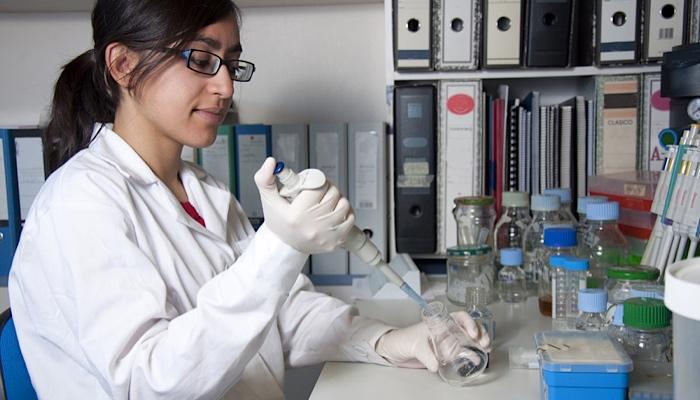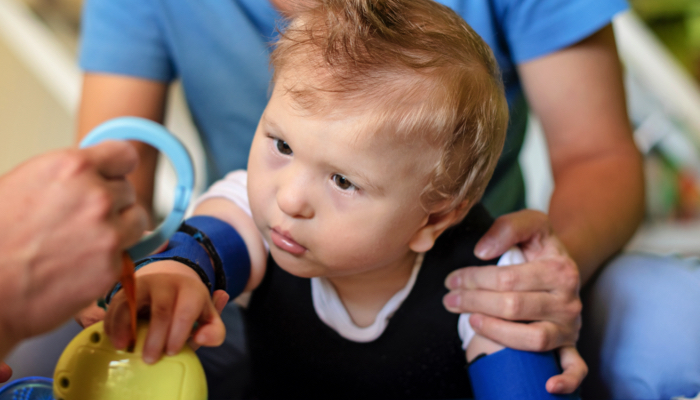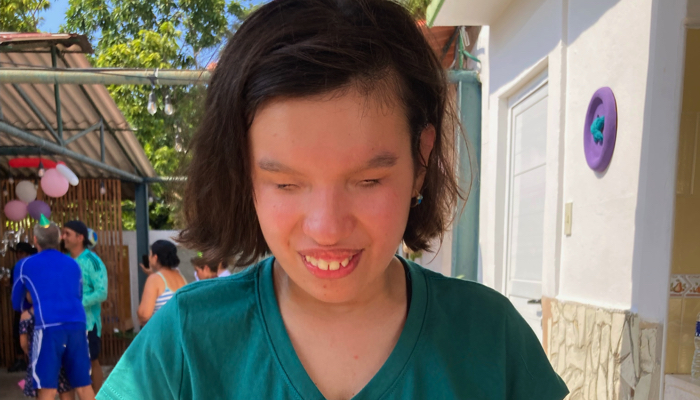What’s genetic testing for LCA?

When diagnosing LCA, most doctors begin with an eye exam, observe the retina, and then order an electroretinogram (ERG). The ERG, which records retinal response to flashes of light, is the traditional way to determine if a patient has LCA.
These days, though, patients can also opt to participate in a genetic screening test to see if doctors can identify the exact gene mutation causing LCA. Although genetic testing has not yet replaced the ERG as the first choice diagnostic tool of most doctors, more and more patients are choosing genetic testing along with (or sometimes independently of) the ERG.
If you are the parent of a child who has been diagnosed (or who has been tentatively diagnosed) with LCA, you may be considering genetic testing, but you probably have lots of questions about the test as well as the results. We’ll try to answer some of those questions here:
How much will it cost and how long will it take?
What does a negative result mean?
Why should we order a test?
Simply put, because you can! Having more information about your child’s disorder will help you make important treatment decisions later on as genetic therapy and other forms of therapy become a reality. It’s also much less invasive than an ERG and much more accurate than an eye exam.
It’s also important to get your child’s information in the right hands. Ordering a genetic test allows the researchers and doctors studying LCA to have as much material to work with as possible. If they are going to find a cure, or at least understand LCA, they need this information. That’s where Project 3000 comes in. This is a project dedicated to finding everyone with LCA in the U.S. and getting them tested.
How do we order a test?
Genetic tests in the United States can be performed at a number of labs, but one of the most well known is Carver Labs at the University of Iowa. You can Order a Test through them personally or have your doctor order a test for you. Of course you will want to try to have your insurance cover the cost, so try going through your doctor first. You can visit Gene Tests to find other labs in the US.
Though the Carver Lab is dedicated to non-profit testing for genetic mutations that cause rare inherited eye disorders, we also have to understand that their resources are limited and they don’t want to proceed with frivolous tests. That being the case, the lab technicians expect you to have a pretty good idea that your child does indeed have LCA. This means that your doctor should be looking for the common symptoms of LCA and that you already have a clinical diagnosis of LCA. At that point, you’re ready to go ahead and perform genetic testing to identify the specific gene mutation that may be causing your child’s blindness.
How much will the test cost and how long will it take?
The cost of the test depends on which disease-causing mutation your child has. This may seem strange, but this is due to the fact that the lab will begin by testing for the most common mutations and then move on to lesser common ones. In other words, they are sort of “playing the odds” by testing for higher occurring mutations first. This way, if your child’s mutation is found in the first round of tests, the test will cost less because the testing, obviously, would stop at that point. If the mutation isn’t found, the tests continue and the cost goes up.
This also means that cost and time are closely connected in these tests. Faster results are cheaper, longer results are more expensive.
The Carver Lab follows a two tier testing system. Here’s how the test breaks down:
| Tier 1 | 14-16 weeks | $957 |
|---|---|---|
| Tier 2 | 6-8 months | $2800 |
Unused fees are returned when the test is complete. A report is sent at the end of each tier. You can choose to test for as many or as few tiers as you want or can afford. You can also ask to just test for one or two specific genes, depending on your personal situation.
If you already know the gene mutation your family carries, you can order a carrier screening from Carver Labs for $121. For example, if your child has LCA and their gene is identified, you could test their unaffected sibling to determine if they are a carrier of LCA.
How do we get the results of the test?
If your test was ordered by your doctor, Carver Lab should send the report to the doctor’s office. If you ordered the test yourself, the lab should send the results directly to you. If you are very impatient, as we all usually are, you can check the status of your test online. You will need an identifier number that should be assigned to you when you order the test. If you haven’t been assigned a number, you can email the lab and they will give you one.
What does a negative result mean?
This is probably one of the biggest questions you have. If your situation is anything like ours, your doctor may have discouraged you from testing for LCA because they said the test wasn’t accurate enough. This isn’t entirely true. The test is accurate, they just don’t have all the pieces of the puzzle together quite yet. All the more reason to send in your child’s blood sample and help the researchers with their quest!
Carver Lab currently tests 15 different genes that are known to house mutations that can cause LCA (AIPL1, CEP290, CRB1, CRX, GUCY2D, IQCB1, LCA5, LRAT, NMNAT1, RD3, RDH12, RPE65, RPGRIP1, SPATA7, TULP1). These genes, though, only account for about 70% to 80% of patients with LCA. This means there are still more genes to discover! If your child’s genetic mutation is not identified, then their blood sample may hold the key to unlocking one of those not-yet-found genetic mutations the researchers are looking for. On the other hand, chances are pretty good that your child’s mutation will be identified since only 20% to 30% are still undiscovered.
So, a negative test result does not mean that your child does not have LCA. It may mean that your child is in that 20% to 30% category and further testing is still required
Can parents be tested?
Yes, parents can and should be tested along with their child. Once a gene mutation has been identified in the child, the researchers then go and look for the mutation in the carriers, i.e. the parents. This helps them understand how the mutation was inherited. In order to save time, parent blood samples should be sent at the same time as the child’s.
If, on the other hand, you are looking to test only the parents and not the child (so the child can avoid the painful blood draw), the answer is no. The research team needs to test the child first. The only explanation I’ve received for this is that it’s much easier to find the mutation in the patient who actually has LCA than it is to find the mutation in the carrier. The carrier’s mutations can be identified once the location has been found in the patient.
Related Posts

Eye Conditions and Syndromes, Support, Visual Impairment
Coping with a Diagnosis: Emotional Support for Families with Visually Impaired Children
Families with emotional support are more resilient. Learn how to establish emotional support with peers, professionals, and the community to help your family thrive.

Special Needs, Visual Impairment
Why Early Intervention Is Critical for Blind Children
Children diagnosed with visual processing disorders, low vision, or blindness need specialized treatment. Early intervention programs can help.

Eye Conditions and Syndromes
Finding Joy and Strength in Raising a Child with Anophthalmia
When raising a child with anophthalmia, be patient, be kind to yourself, and take it one day at a time. Your child will fill your life with love!